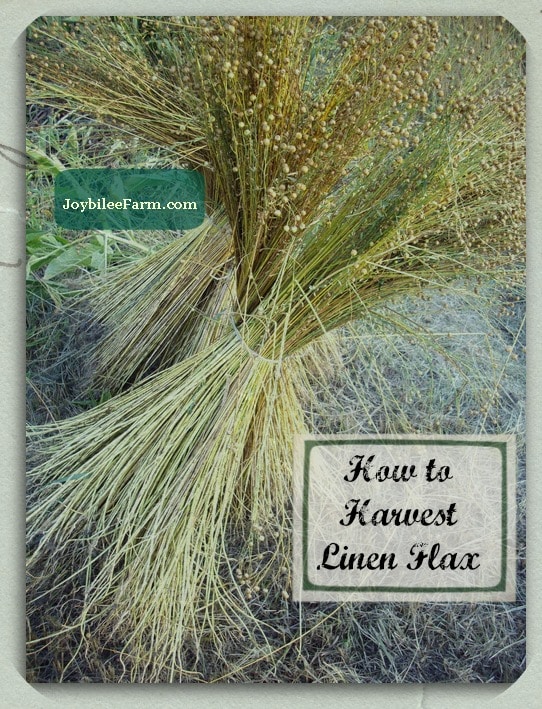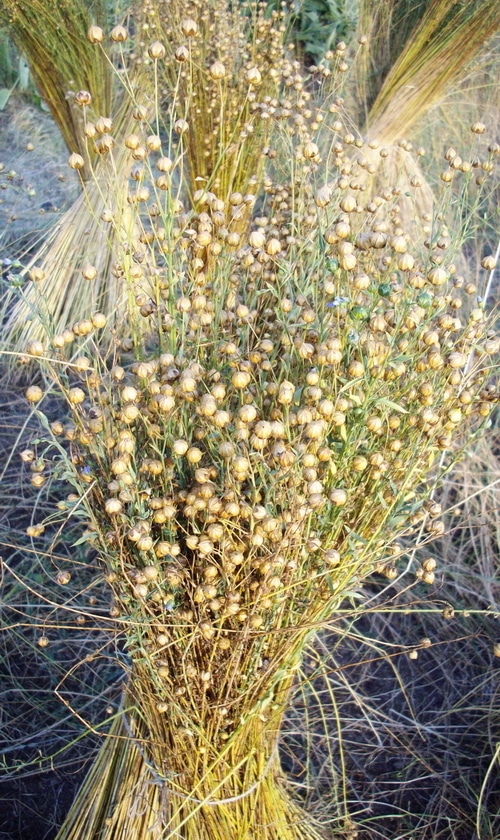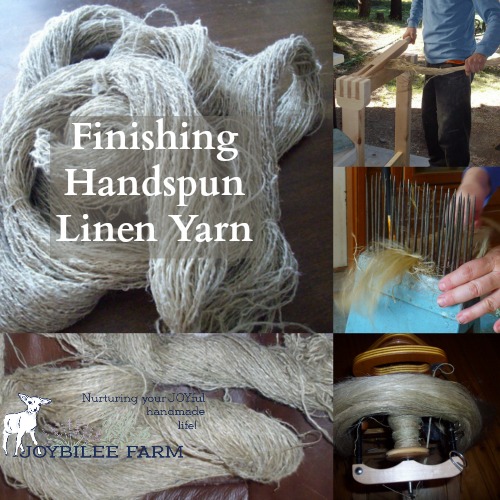Harvesting Linen Flax
Linen, a specially selected variety of the flax plant, grown for its long, unbranched stocks, is harvested 100 days after planting, before the seeds are fully ripe. The plants, which are grown for their long, luxurious bast fiber, are pulled up by the roots in order to maximize the length of the fiber.
It’s very important when harvesting flax for linen fiber to harvest at the right time. You don’t want to leave it in the field too long. You don’t want to wait until the seeds are completely ripe. This toughens the linen fiber in the stems and you will not get soft, fine linen fibers that are also strong. If the plants dry out in the field and turn brown, the fiber becomes brittle and there is a greater percentage of waste when the plants are processed for fiber.
How to know if your linen is ready to harvest
When linen flax is ready for harvesting, flowering has stopped. One or two flowers may be visible in the field but predominantly each stalk has only seed bolls visible. The plants are 2/3rds yellow and 1/3rd still green. The seed has formed in the seed bolls but it is still white or pale brown and immature, inside the boll. This is the optimal time for harvest. If the field was planted in a single day, the window of optimal harvest may be only a day or two. So be prepared to put aside other activities to get the harvest in efficiently.
How to harvest linen
Harvest on a dry day. If it’s raining, wait until the plants are dry before harvesting. Never harvest in the rain. You don’t want to walk on the wet soil, and compact the earth. The wet plants will heat up and the core of your bundles will rot and mold instead of continuing to mature in the shook as they should.

The seed will mature while the plants dry out. Once the seed is mature it can be rippled from the plants to feed to livestock or to save for planting in the following year. Plan to ripple the plants before storing them for the winter. Keep varmints out of your seeds as you may want to save your seed to plant for the following year – saving you money and ensuring the you have an eternal supply of linen flax.
More about rippling linen flax in September, once the seeds of this year’s harvest are mature. Would you like a video of the rippling process and the equipment and set up that I use?
More resources:
This is my very favorite book about growing, harvesting, and processing linen. It has lots of history, culture, and hands on, practical advice to help you master this lost art.
Linen from flax seed to woven cloth

More About Linen
How to Finish Linen Yarn
Linen the Endangered Natural Fiber



Hello
I am wanting to plant linen flax in Central America. Pretty hot & dry about 2/3rd of the year do you think I could get two harvests out? Also I know you said specialty seed? But is there another specific name it goes by? This is wonderful by the way. I’m looking to learn & do the whole process from seed to linen as natural as possible. Any book or video references that you could recommend would be greatly appreciated.
Thank you so much! I fear I got the wrong flax but I have grown it and am trying to harvest what I can. It’s my first experience; next year I will specifically look for linen flax – for that is what I want. Thank you.
maribeth
Hi, Maribeth, flax that is grown for fibre is a specialty flax. It does have a blue flower. There are several varieties of flax. The blue flowered flax is an ornamental flower. There is also oil seed flax that is a short flax grown specifically for it’s oil rich seed. Fiber flax is a tall flax, usually 4 feet tall that produces long linen fibers in its stem. If you want to grow the fiber flax (aka. linen) you need seed for fiber flax or linen flax. The other two kinds of flax seed won’t produce the long smooth fibers.